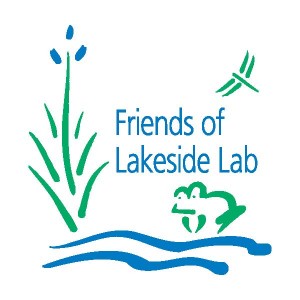I have hidden fifteen cassette tapes across Lakeside Lab’s campus
by J. Clay Gonzalez
In recent years, I’ve had the pleasure of spending time with field recordings of American folk music. I got a job transcribing songs recorded by musicologists, all over early twentieth century America. The recordings are grainy, noisey, difficult to make out, and often stunningly beautiful. Listening to them feels like peeking through a window into a distant and unfamiliar world, transporting me to the time and place of that recording’s origin. Sometimes, a song will be the only surviving recording of a singer, or one of very few. These recordings haunt me. I think of what will remain of my own life, my own voice, a hundred years from now.
The artist’s studio in which I work doubles as an herbarium, a type of library wholly unfamiliar to me upon to my arrival at the Lakeside Lab. In one corner, dried plants are affixed to acid-free paper, labeled with names and dates going back a hundred years. Peeking at a pale, dry leaf collected in 1928, I feel that same sharp melancholy I get from old recordings of singers long gone. Here is an artifact, dried and preserved, born into a slice of the world completely unlike my own. Were it not for this specimen, that world would have dissolved into time, forgotten. Through its preservation, the leaf maintains continuity between that summer in 1928 and my own present moment, two worlds connected across an untransversable chasm of time by common place.

The Lab is filled with archives like this, splayed out across the walls and shelves of nearly every building on campus. Some are formal, like that in the herbarium. Others have no curator, more or less random assemblage of items accumulated on shelves and cabinets by chance over decades. These informal museums captivate me. Some hold glassware. Another, a bathymetric relief map of Lake Okachobi. There are desiccated wasps. Matches. A VCR player. I catch these objects out of the corner of my eyes and fixate on them. When was the last time they were touched?
Each object is a thin filament connecting Lakeside’s present with its past, giving this place a sense of life and of deep time. Lakeside has been deeply cared for and maintained by folks who have known its beauty, who have interwoven this place with their own histories. When people connect so deeply to place, they invariably develop volition to protect it, to preserve the place’s soul.
Places with souls can heal those who slow down into them. Such places have great power and are of immeasurable value to humankind.

I have drawn healing energy from the kindness and beauty of this place, and I feel obliged to give something in return. Rather than channelling the fruits of my time here out into the world, I want to focus it back into the Lakeside community. Composting, if you will.
One way to return energy to a place is by making music that preserves and enriches it. Music can become a node around which people connect to each other, to the places they live in, to the land both artist and listener share. When deeply emplaced, music becomes part of the ecology, part of the language, part of the land itself. Place and music feed each other, a beautiful mutualism that promotes the flourishing of the human spirit.

I’ve come to see that my most meaningful experiences with music are inextricably intertwined with the places that nurtured the music’s creation. This bond makes transposition of that music out of its birthplace meaningless, even violent. Music is not just sound, but also the feeling of belonging, of being part of something beautiful. Not just sound, but the feeling of starting next to something very big, something very old. Not just sound, but the awareness that things started way before our birth, and will continue long after we’re gone. Not just sound, but the act of gathering together around an object of common focus, and the bonding that comes when people share attention.
I have hidden fifteen cassette tapes across Lakeside Lab’s campus. The recordings I made in residency will not be distributed online, but will remain physically affixed to this place like a soul to a body. The cassettes contain forty-one songs, all of which I recorded in the herbarium. Some of them are folksongs I know from memory. Others are songs I wrote. Some are improvisatory, others notated. In instances where I recorded multiple versions of a song, all versions are included.

None of these recordings can be found anywhere else on earth, which is how I plan to keep it. If you want, you can use the campus’s cassette recorders to add to these tapes— a song, a poem, a spoken thought. I’m hoping that the tapes I’m leaving get used over years, that layers of sound spread over them them like sediment on a riverbank. Perhaps, someways down the road, they’ll accumulate the weight of deep time contained in those old field recordings. Maybe, they’ll just be something for people to talk about, to gather around.
I don’t know what will happen to these tapes after I leave. Some of them may be lost, others may degrade over time, some might even be recorded over. But in leaving music in these odd, unwieldy packages, I like to think it will stay here at Lakeside. Like the desiccated plants in the herbarium, I hope they give some future listener a fleeting feeling of connection to the past, distant in time but connected by a shared, living place. A moment of life, a voice from the past, dried and preserved, catalogued and shelved, a quiet reminder of the continuity of place over time.





